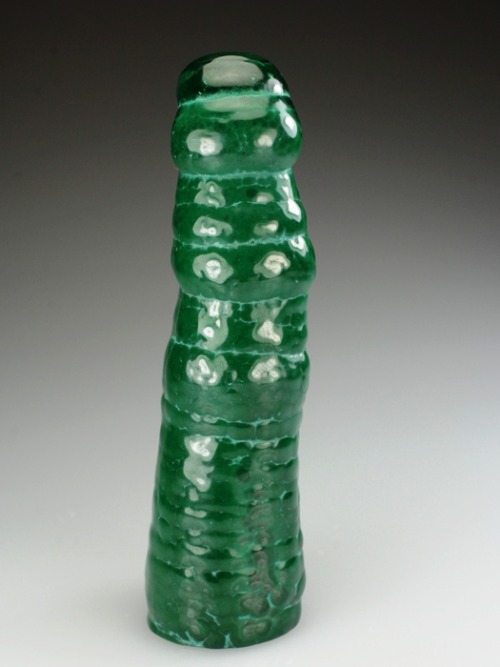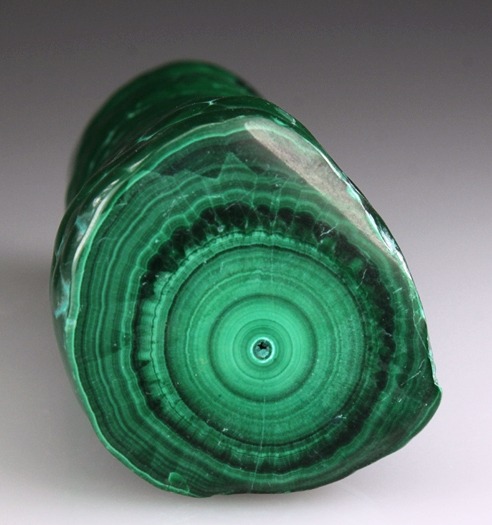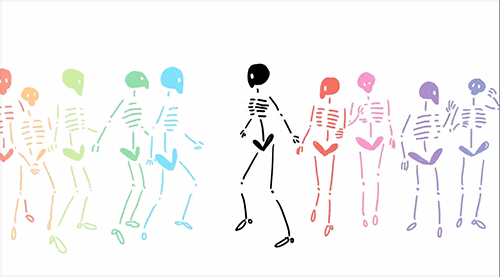Polished Malachite Stalactite - Copper Crescent, Congo



Polished Malachite Stalactite - Copper Crescent, Congo
More Posts from Mattlindel and Others
the two previous movie series of Spider-Man always had it that Spidey was a Big Hit with the citizens of nyc in spite of the negative press/police departments actively hunting him down but we haven’t really seen anything like that in the mcu past Peter’s classmates simply being aware that Spider-Man is a hero who exists, like we didn’t see any slandering articles or angry officers which is WEIRD considering the canonical climate about superheros in the mcu right now so like….I really hope it carries over into this third series because frankly I love the idea of everyone in a post-accords world in constant debate about superheroes like ‘should they be held accountable for casualties’ and ‘does it make sense to give all this power to just a few people and force them to make potentially catastrophic situations’ and ‘do we even truly Need superheroes’ like any and all debate they can think of but at the same time, all the citizens in New York are collectively like ‘Yeah….but we’re gonna leave the Spider-Boy out of this….he just wants to help out….he’s doing his Best..’ lmao


Meanwhile, in prehistoric Canada…..

like a year ago I saw a trailer for Some Fucking Romcom where I thought for the first thirty seconds the plot was “bride asks her gay brother and his boyfriend to get heterosexual dates for her wedding”
turns out the plot actually was “bride asks her two Commitmentphobic ™ brothers to get dates for her wedding” which, lame
I like my idea, where two gay dudes and two lesbians have to pretend to be straight for an entire weekend
“I can definitely pretend to be straight,” Lesbian One says, “I successfully pretended to be a straight man for twenty years.”
“No,” her girlfriend Lesbian Two says, “no you definitely didn’t.”
Lesbian Two, who is butch, discovers an eyelash curler. “What is this, a torture device?”
Gay Guy One hooks up with the DJ, the wedding planner, three caterers and the best man. Shenanigans happen as he narrowly avoids getting caught by the bride.
Gay Guy Two, of course, finds himself falling hopelessly in love with the groom.
At the climax of the movie Gay Guy One falls out of the closet where he’s making out with his latest conquest, the florist. The bride screams, eyeliner smearing from tears, about how he’s RUINING HER WEDDING and she didn’t choose to have a brother who was QUEER and why didn’t he ever think about HER and why couldn’t he just pretend to be NORMAL for her SPECIAL DAY–
the groom is like “honey, I’m bi”
the bride says “no, you’re not! you’re marrying me! you’re straight now!”
and then the wedding is called off and Gay Guy Two and the groom live happily ever after. the after-credits scene is Lesbian Two suspiciously poking her eyelids with an eyelash curler

{Help this user obi Juan whoever the fuck you are…. You’re their only ho}

Iconic.
In linguistics, a filler is a sound or word that is spoken in conversation by one participant to signal to others that he/she has paused to think but is not yet finished speaking. These are not to be confused with placeholder names, such as thingamajig, which refer to objects or people whose names are temporarily forgotten, irrelevant, or unknown.
In Afrikaans, ah, em, and eh are common fillers.
In Arabic, يعني yaʿni (“I mean”) and وﷲ wallāh(i) (“by God”) are common fillers.[2][3][4]
In American Sign Language, UM can be signed with open-8 held at chin, palm in, eyebrows down (similar to FAVORITE); or bilateral symmetric bent-V, palm out, repeated axial rotation of wrist (similar to QUOTE).
In Bengali, mane (“it means”) is a common filler.
In Catalan, eh /ə/, doncs (“so”), llavors (“therefore”), and o sigui (“it means”) are common fillers.
In Czech, tak or takže (“so”), prostě (“simply”), jako (“like”) are used as fillers. Čili (“or”) and že (“that”, a conjunction) might also be others. A person who says jako and prostě as fillers might sound a bit simple-minded to others.[5]
In Danish, øh is one of the most common fillers.
In Dutch, eh, ehm, and dus are some of the more common fillers.
In Esperanto, do (“therefore”) is the most common filler.
In Filipino, ah, eh, ay, and ano are the most common fillers.
In Finnish, niinku (“like”), tota, and öö are the most common fillers.
In French, euh /ø/ is most common; other words used as fillers include quoi (“what”), bah, ben (“well”), tu vois (“you see”), and eh bien (roughly “well”, as in “Well, I’m not sure”). Outside of France, other expressions are tu sais (“you know”), t’sais’veux dire? (“you know what I mean?”), or allez une fois (“go one time”). Additional filler words include genre (“kind”), comme (“like”), and style (“style”; “kind”)
In German, a more extensive series of filler words, called modal particles, exists, which actually do give the sentence some meaning. More traditional filler words are äh /ɛː/, hm, so /zoː/, tja, and eigentlich (“actually”)
In Hebrew, eh is the most common filler. Em is also quite common.
In Hindi, matlab (“it means”) and “Mah” are fillers.
In Hungarian, common filler words include hát (well…) and asszongya (a variant of azt mondja, which means “it says here…”).
In Icelandic, a common filler is hérna (“here”). Þúst, a contraction of þú veist (“you know”), is popular among younger speakers.
In Indonesian (Bahasa Indonesia), anu is one of the most common fillers.
In Italian, common fillers include “tipo” (“like”), “ecco” (“there”) and “cioè” (“actually”)
In Irish Gaelic, abair /ˈabˠəɾʲ/ (“say”), bhoil /wɛlʲ/ (“well”), and era /ˈɛɾˠə/ are common fillers, along with emm as in Hiberno-English.
In Japanese, common fillers include eetto, ano, sono, and ee.
In Kannada,Matte for also,Enappa andre for the matter is are the common fillers.
In Korean, eung, eo, ge, and eum are commonly used as fillers.
In Lithuanian, nu, am and žinai (“you know”) are common fillers.
IN Maltese and Maltese English, mela (“then”), or just la, is a common filler.
In Mandarin Chinese, speakers often say 这个 zhège/zhèige (“this”) or 那个 nàge/nèige (“that”). Another common filler is 就 jìu (“just/precisely”).
In Norwegian, common fillers are øh, altså, på en måte (“in a way”), ikke sant (literally “not true?”, “no kidding”, or “exactly”), vel (“well”), and liksom (“like”). In Bergen, sant (“true”) is often used instead of ikke sant. In the Trøndelag region, skjø’ (“see?” or “understand?”) is also a common filler.
In Persian, bebin (“you see”), چیز “chiz” (“thing”), and مثلا masalan (“for instance”) are commonly-used filler words. As well as in Arabic and Urdu, يعني yaʿni (“I mean”) is also used in Persian. Also, eh is a common filler in Persian.
In Portuguese, tipo (“like”) is the most common filler.
In Romanian, deci /detʃʲ/ (“therefore”) is common, especially in school, and ă /ə/ is also very common (can be lengthened according to the pause in speech, rendered in writing as ăăă), whereas păi /pəj/ is widely used by almost anyone.
In Russian, fillers are called слова-паразиты (“vermin words”); the most common are Э-э (“eh”), это (“this”), того (“that”), ну (“well”), значит (“it means”), так (“so”), как его (“what’s it [called]”), типа (“like”), and как бы (“[just] like”).
In Serbian, znači (“means”) and ovaj (“this”) are common fillers.
In Slovak, oné (“that”), tento (“this”), proste (“simply”), or akože are used as fillers. The Hungarian izé (or izí in its Slovak pronunciation) can also be heard, especially in parts of the country with a large Hungarian population. Ta is a filler typical of Eastern Slovak and one of the most parodied features.
In Slovene, pač (“but”, although it has lost that meaning in colloquial, and it is used as a means of explanation), a ne? (“right?”), and no (“well”) are some of the fillers common in central Slovenia, including Ljubljana.
In Spanish, fillers are called muletillas. Some of the most common in American Spanish are e /e/, este (“this”), and o sea (roughly means “I mean”).[6], in Spain the previous fillers are also used, but ¿Vale? (“right?”) and ¿no? are very common too.
In Swedish, fillers are called utfyllningsord; some of the most common are öhm, ja (“yes”), ba (comes from “bara”, which means “just”), asså or alltså (“therefore”, “thus”), va (comes from “vad”, which means “what”), and liksom and typ (both similar to the English “like”).
In Ukrainian, ой /ɔj/ is a common filler.
In Urdu, yani (“meaning…”), falan falan (“this and that”; “blah blah”), umm, and aaa are also common fillers.
In Telugu, ikkada entante (“Whats here is…”) and tarwatha (“then…”) are common and there are numerous like this.
In Tamil, paatheenga-na (“if you see…”) and apparam (“then…”) are common.
In Turkish, yani (“meaning…”), şey (“thing”), “işte” (“that is”), and falan (“as such”, “so on”) are common fillers.
In Welsh, de or ynde is used as a filler (loosely the equivalent of “You know?” or “Isn’t it?”). Ym… and Y… are used similarly to the English “um…”.
I want a story about a king whose son is prophesied to kill him so the king is like “whatever what am I supposed to do, kill my own kid wtf is wrong with you” so he just raises him as normal, doesn’t even tell him about the prophecy, and instead of some convoluted twist of events that leads to the king’s murder the son grows up and when the king is very old and dying and in excruciating pain the kid is just like alright I'mma put him out of his misery.
The fact that nobody is talking about Secret’s new commercials pisses me off
como se dice….. oof
-
 brownhairandeyesonline liked this · 1 month ago
brownhairandeyesonline liked this · 1 month ago -
 alphaeklund liked this · 1 month ago
alphaeklund liked this · 1 month ago -
 ainxis liked this · 1 month ago
ainxis liked this · 1 month ago -
 diabetic-bean reblogged this · 1 month ago
diabetic-bean reblogged this · 1 month ago -
 diabetic-bean liked this · 1 month ago
diabetic-bean liked this · 1 month ago -
 avayarising reblogged this · 1 month ago
avayarising reblogged this · 1 month ago -
 alejandro-vargass-wife liked this · 1 month ago
alejandro-vargass-wife liked this · 1 month ago -
 aniseandspearmint liked this · 1 month ago
aniseandspearmint liked this · 1 month ago -
 shadow-spires reblogged this · 1 month ago
shadow-spires reblogged this · 1 month ago -
 squiddy-the-drippy liked this · 1 month ago
squiddy-the-drippy liked this · 1 month ago -
 what-if-i-do-not-want-a-username reblogged this · 1 month ago
what-if-i-do-not-want-a-username reblogged this · 1 month ago -
 what-if-i-do-not-want-a-username liked this · 1 month ago
what-if-i-do-not-want-a-username liked this · 1 month ago -
 hitumblypoos liked this · 1 month ago
hitumblypoos liked this · 1 month ago -
 a-midnight-rest reblogged this · 1 month ago
a-midnight-rest reblogged this · 1 month ago -
 trashpocket liked this · 1 month ago
trashpocket liked this · 1 month ago -
 blubeasty reblogged this · 1 month ago
blubeasty reblogged this · 1 month ago -
 vivitstew reblogged this · 1 month ago
vivitstew reblogged this · 1 month ago -
 vivitstew liked this · 1 month ago
vivitstew liked this · 1 month ago -
 oujib0y liked this · 1 month ago
oujib0y liked this · 1 month ago -
 someidioticurl reblogged this · 1 month ago
someidioticurl reblogged this · 1 month ago -
 rqchance liked this · 1 month ago
rqchance liked this · 1 month ago -
 npdpuppy liked this · 1 month ago
npdpuppy liked this · 1 month ago -
 amazingnobody reblogged this · 1 month ago
amazingnobody reblogged this · 1 month ago -
 prttyplz liked this · 1 month ago
prttyplz liked this · 1 month ago -
 spiewak liked this · 1 month ago
spiewak liked this · 1 month ago -
 qweirdangels reblogged this · 1 month ago
qweirdangels reblogged this · 1 month ago -
 sinisternoodles101 liked this · 1 month ago
sinisternoodles101 liked this · 1 month ago -
 skywarpedseeker reblogged this · 1 month ago
skywarpedseeker reblogged this · 1 month ago -
 skywarpedseeker liked this · 1 month ago
skywarpedseeker liked this · 1 month ago -
 latriviata reblogged this · 1 month ago
latriviata reblogged this · 1 month ago -
 phidippus-fangz reblogged this · 1 month ago
phidippus-fangz reblogged this · 1 month ago -
 phidippus-fangz liked this · 1 month ago
phidippus-fangz liked this · 1 month ago -
 the-incredible-auraa reblogged this · 1 month ago
the-incredible-auraa reblogged this · 1 month ago -
 the-incredible-auraa liked this · 1 month ago
the-incredible-auraa liked this · 1 month ago -
 sh0tabuzee liked this · 1 month ago
sh0tabuzee liked this · 1 month ago -
 sh0tabuzee reblogged this · 1 month ago
sh0tabuzee reblogged this · 1 month ago -
 weak2touch liked this · 1 month ago
weak2touch liked this · 1 month ago -
 phantomcups reblogged this · 1 month ago
phantomcups reblogged this · 1 month ago -
 concupiscentlyashen-blog reblogged this · 1 month ago
concupiscentlyashen-blog reblogged this · 1 month ago -
 yomo715 liked this · 1 month ago
yomo715 liked this · 1 month ago -
 2bruce2 reblogged this · 1 month ago
2bruce2 reblogged this · 1 month ago -
 bigwolfinternet liked this · 1 month ago
bigwolfinternet liked this · 1 month ago -
 riversparkling liked this · 1 month ago
riversparkling liked this · 1 month ago -
 nezu-optix liked this · 1 month ago
nezu-optix liked this · 1 month ago -
 nostalgia-detective liked this · 1 month ago
nostalgia-detective liked this · 1 month ago -
 crow-is-me liked this · 1 month ago
crow-is-me liked this · 1 month ago -
 notsafeforwish liked this · 1 month ago
notsafeforwish liked this · 1 month ago -
 krinndnz reblogged this · 1 month ago
krinndnz reblogged this · 1 month ago